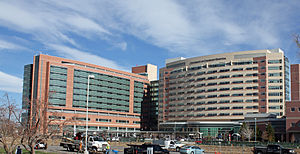Part of the University of Chicago Medical Center.
An experimental emergency room triage program that coordinated care with multiple departments at the University of Chicago Medical Center cut wait times for very ill patients to be admitted to the hospital by more than two hours.
A study in the Annals of Emergency Medicine looked at how clinicians in the program apparently achieved this.
University of Chicago Medical Center researchers designed the pilot, called “Dr. Admit,” to help physicians identify as early as possible the sickest patients showing up in the ER. They then worked closely with nurses, the laboratory, imaging and consulting resources to prioritize the patients’ needs.
Patients in the program were admitted within 192 minutes after arrival in the ER compared to the other patients, who were admitted on average 329 minutes after arrival.
To read the report, please hit this link.





